- Home
- Farley Mowat
Sibir: My Discovery of Siberia
Sibir: My Discovery of Siberia Read online
FARLEY MOWAT was born in Belleville, Ontario, in 1921, and grew up in Belleville, Trenton, Windsor, Saskatoon, Toronto, and Richmond Hill. He served in World War II from 1940 until 1945, entering the army as a private and emerging with the rank of captain. He began writing for his living in 1949 after spending two years in the Arctic. Since 1949 he has lived in or visited almost every part of Canada and many other lands, including the distant regions of Siberia. He remains an inveterate traveller with a passion for remote places and peoples. He has twenty-five books to his name, which have been published in translations in over twenty languages in more than sixty countries. They include such internationally known works as People of the Deer, The Dog Who Wouldn’t Be, Never Cry Wolf, Westviking, The Boat Who Wouldn’t Float, Sibir, A Whale for the Killing, The Snow Walker, And No Birds Sang, and Virunga: The Passion of Dian Fossey. His short stories and articles have appeared in The Saturday Evening Post, Maclean’s, Atlantic Monthly and other magazines.
BOOKS BY FARLEY MOWAT
People of the Deer (1952, revised edition 1975)
The Regiment (1955, new edition 1973)
Lost in the Barrens (1956)
The Dog Who Wouldn’t Be (1957)
Grey Seas Under (1959)
The Desperate People (1959, revised edition 1975)
Owls in the Family (1961)
The Serpent’s Coil (1961)
The Black Joke (1962)
Never Cry Wolf (1963, new edition 1973)
Westviking (1965)
The Curse of the Viking Grave (1966)
Canada North (illustrated edition 1967)
Canada North Now (revised paperback edition 1976)
This Rock Within the Sea (with John de Visser)
(1968, reissued 1976)
The Boat Who Wouldn’t Float
(1969, illustrated edition 1974)
Sibir (1970, new edition 1973)
A Whale for the Killing (1972)
Wake of the Great Sealers
(with David Blackwood) (1973)
The Snow Walker (1975)
And No Birds Sang (1979)
The World of Farley Mowat, a selection from his works
(edited by Peter Davison) (1980)
Sea of Slaughter (1984)
My Discovery of America (1985)
Virunga: The Passion of Dian Fossey (1987)
The New Founde Land (1989)
EDITED BY FARLEY MOWAT
Coppermine Journey (1958)
THE TOP OF THE WORLD TRILOGY
Ordeal by Ice (1960, revised edition 1973)
The Polar Passion (1967, revised edition 1973)
Tundra (1973)
An M&S Paperback from McClelland & Stewart Inc.
First printing April 1990
Cloth edition printed 1970
Trade paperback (revised) edition printed 1973
Collector’s edition printed 1980
Copyright © 1970, 1973 by Farley Mowat
All rights reserved. The use of any part of this publication reproduced, transmitted in any form or by any means, electronic, mechanical, photocopying, recording, or otherwise, or stored in a retrieval system, without prior consent of the publisher, is an infringement of the copyright law.
Canadian Cataloguing in Publication Data
Mowat, Farley, 1921-
Sibir
(M&S paperback)
eISBN: 978-1-55199-392-8
1. Mowat, Farley, 1921- - Journeys – Russian
S.F.S.R. – Siberia. 2. Siberia (R.S.F.S.R.) – Description and travel – 1945-1980. I. Title.
DK756.M68 1990 915·7′04853 C89-095194-2
McClelland & Stewart Inc.
The Canadian Publishers
75 Sherbourne Street,
Toronto, Ontario
M5A 2P9
v3.1
Contents
Cover
About the Author
Other Books by This Author
Title Page
Copyright
Maps
Preface
Chapter One
Chapter Two
Chapter Three
Chapter Four
Chapter Five
Chapter Six
Chapter Seven
Chapter Eight
Chapter Nine
Chapter Ten
Chapter Eleven
Chapter Twelve
Chapter Thirteen
Chapter Fourteen
Chapter Fifteen
Chapter Sixteen
Chapter Seventeen
Chapter Eighteen
Chapter Nineteen
Chapter Twenty
Chapter Twenty-One
Chapter Twenty-Two
Chapter Twenty-Three
MAPS
Top of the World
Western Siberia
Eastern Siberia
Preface
I WAS THIRTEEN years old when I made my first visit to the arctic. Ever since then the northern regions of the world and the people who inhabit them have fascinated me. Over the years I have visited most parts of the Canadian arctic; and I have read extensively about, or travelled in, other northern regions but, until 1966, I knew almost nothing about the realities of the Soviet north. This was not because of any lack of interest on my part; it was because of the almost incredible paucity of information in the West about the “other half of the arctic world.” Most English language sources have painted, and continue to paint, the Soviet arctic and subarctic as a wilderness of trackless forests and snow-covered tundra inhabited mainly by ravening wolves and doomed political prisoners. Even professional northern experts in Canada and the United States seem to have surprisingly little interest in, or knowledge of, the Russian north except insofar as they profess to be concerned about it as a possible springboard for a Red invasion of North America.
By 1965 the Soviets had published several of my northern books in translation and as a result I had been in correspondence with a number of Russian writers. One of these was Yuri Rytkheu, himself an arctic native, born and bred. In the autumn of 1966 he suggested that I visit him. As it happened I had spent that summer making a comprehensive tour of the Canadian arctic, gathering material for yet another northern book*. The idea of comparing what I had seen in northern Canada with what I might see in the Soviet Union was irresistible. Accordingly I arranged to sail to Leningrad, accompanied by my wife, Claire.
My first visit to the U.S.S.R. turned out to be far more extensive than I had anticipated. The most important aspect of it was a 15,000 mile peregrination through Siberia, at the end of which I felt I had acquired some first-hand knowledge of what was taking place in that huge and, for westerners, mysterious region. The idea of writing a book designed to dispel some of our misconceptions about Siberia naturally occurred to me on my return to Canada, but I did not feel I knew enough, as yet, to warrant such a book. A second trip seemed to be called for but I was not able to find the time until the autumn of 1969 when, accompanied by photographer John de Visser, I again returned to the Soviet Union. Yuri Rytkheu met us and we three travelled together for some 14,000 miles from the Ural Mountains to the Sea of Okhotsk, from the Mongolian border to the Arctic Ocean. This book is the outcome of these two journeys.
A word about the problems of collecting information in the Soviet Union. I speak no Russian and made no real attempt to learn the language. In my experience it is a mistake to speak a foreign language badly. Local people tend to assume you understand it much better than you do and will use their own tongue in conversation with you. However, if they realize that you are a linguistic dub they will often make the effort to communicate in your language. To a surprising degree the people I met in Russia were able
to do just this. Most of my major informants spoke reasonably good English or French. Those who did not conversed with me through Yuri or through interpreters. To obviate errors as much as possible I made use of a portable tape-recorder. On my first journey both Claire and my interpreter took comprehensive notes so I had three independent sets of notes to work from. During my second journey Yuri acted as a check on the interpreters to ensure that I missed nothing of importance.
Statistics are always a problem. To some extent they have to be accepted at face value, but whenever it was possible to check them through other sources I took care to do so. The statistics I have used here appeared, on the basis of what I saw with my own eyes, to be believable. The population figures I have used are not official because the last Siberian census was in 1964, and was an interim one. The figures I have used – given in round numbers – are the informed estimates of the appropriate local officials.
A word about money comparisons. The ruble had an official exchange value of $1.22 Canadian during both my visits. However a socialist country provides so many economic side benefits that to directly compare, for example, the ruble income of a Soviet truck driver with the dollar income of his North American counterpart would be misleading. In terms of the benefits a Russian worker receives over and above his salary, and the relatively small deductions to which he is subject for taxes and social services, his wages have a real value on the order of two to three times their apparent one. This is a point usually ignored by western writers.
It is our common practice to use the word “Russia” as a generic term to embrace the whole of the U.S.S.R.; and to identify the citizens of that entire region as “Russians.” The fact is that there are fifteen distinct Soviet Socialist Republics in the Union, and the “Russian” one – the Russian Soviet Federated Socialist Republic – itself contains sixteen Autonomous Soviet Socialist Republics, and five Autonomous Regions and ten National Districts, most of which are not ethnically Russian. Nevertheless, for the sake of simplicity, I have employed “Russia” and “Russians” in their sloppy but widely accepted western usage.
In dealing with the literal translation and spelling of Russian words I have been somewhat arbitrary since there is no universally accepted standard. However, Russian friends assure me that my translations are quite comprehensible.
It is obvious that I could not have assembled the information in this book, or indeed made the journeys at all, without a great deal of cooperation from organizations and individuals in the Soviet Union. They are all mentioned in the book so there is no need to list them here. I extend my heartfelt thanks to all of them.
Certain editorial corrections and additions were made for this new edition.
Port Hope, Ontario
February 1973
* Canada North, McClelland and Stewart, Toronto, 1967.
One
WHEN CLAIRE and I arrived in Leningrad in the autumn of 1966 aboard the Alexander Pushkin, we were met by Yuri Rytkheu. Yura (the affectionate form of Yuri) was then thirty-five years of age. He was a Chukchee – a member of a native people living in the extreme northeastern corner of Asia almost within sight of Alaska. Born in a yaranga – a sod shanty roofed with walrus hide – Yura grew up in a primitive coastal village where he attended the first school to be built in Chukotka. He did so well that he was chosen to go on to a higher education which, in his case, meant Leningrad University. Even before graduation he had begun to write, first in his own language and then in Russian. When I met him he was already the author of twelve novels.
Erect, a trifle portly, with wide, mobile lips and a pair of horn-rimmed glasses which glittered inscrutably from an impassive face, he had the natural dignity and presence of an Asiatic princeling. But under his mask was a droll sense of humour, a questioning mind, and a complex blend of native Asian and acquired European characteristics.
Yura introduced me to the foremost northern experts in Leningrad – men and women who were tremendous enthusiasts and who were almost embarrassingly anxious to tell me about their work. Later we went to Moscow and I was again introduced to many people involved in the development of the Soviet north. What all these people had to tell me was fascinating, but after a while I began to grow a little restive.
I confided the reasons for my distress to Yura. “This is all very interesting, but what I’d really like is to see for myself what is happening in your north.”
“Where you want to go?” asked Yura.
That was a stopper. I knew so little of the Soviet arctic that I could not fasten on a single name.
“Oh,” I said airily, “Northeast Siberia, I suppose. It’s the closest to Canada.”
Yura merely nodded. Next morning he arrived at our room in the Hotel Pekin to tell Claire and me we had permission to go anywhere in Siberia – as long as we could pay our way.
Concealing my incredulity, I accompanied him to the headquarters of the Union of Soviet Writers where, over cognac and cakes, the permission was confirmed by the Director of the Foreign Section. Furthermore the Director instructed his assistant, Freda Lurie, to arrange with the local branches of the Writers’ Union in those areas we might visit to provide us with whatever assistance we should need.
It all seemed suspiciously easy. I had so often heard that, as far as foreigners were concerned, only Communist Party members or trusted fellow travellers were given any real freedom of movement in the U.S.S.R. that I had the horrid feeling somebody had made a mistake about my status. The prospect that the mistake might be discovered while Claire and I were in the depths of Siberia was unnerving. Somewhat awkwardly I tried to explain my apprehensions to the Director.
He was amused. “It is true we do not open up our country to all foreign visitors. This is because so many only come to look for ways to make bad propaganda about us. Nevertheless, we Russians are naturally hospitable, and to any person of good will who is not a victim of too many misconceptions about us, we are happy to extend the best welcome of our people. That you are not a Communist is no difficulty. We believe you will be fair and therefore do not hesitate to let you go where you wish.…” He hesitated for a moment, then smiled and continued, “… anywhere within reason, of course. And I am sure you are a reasonable man.”
The plan he proposed was that Claire and I and Yura would fly first to Yakutsk, capital of the Yakut Autonomous Soviet Socialist Republic in northeastern Siberia, and would make that city our operational base. The details of our further travels could be decided on the spot, in consultation with the local experts. Was this agreeable?
“Yakutsk,” I said bluffing bravely, “is where I’ve always wanted to go.”
“Then,” said the Director, draining his glass, “I suggest you contact Aeroflot and get your tickets. Come and tell me about the trip when you get back.”
The lady clerk at the Aeroflot booking office was discouraging. “Yakutsk? I don’t advise it. Really, nobody goes there. And at the beginning of winter, too! Wouldn’t you rather visit the Black Sea?”
Finding us adamant she gave us our tickets, shaking her head dubiously as she did so. When I paid for them I got a shock. The fare for the round trip of 7,600 miles was 132 rubles – approximately $165!
“At that price,” said Claire pessimistically, “they’ll probably just give us each a pair of wings … or perhaps a second-hand broomstick.”
Although we were content to undertake the trip with only Yura as a companion, he demurred. Yura had studied English for several years but had not had much practice in speaking it until we arrived, and he was not happy at the prospect of serving as our interpreter. I think his pride was also involved. After all, he was a famous writer, and our friend – not our servant. He suggested we should hire a professional interpreter. We called the ever-helpful Freda Lurie and she recommended a young man named Nikolai Kosolopov. Kola, as we soon came to call him, was twenty-three years old and a student of Political Economy at Moscow University. He was small, taut, tidy, and quick as a bird. The son of an engin
eer father and an engineer mother, he had eschewed that profession himself but had married an engineer, possibly to keep the family tradition alive. Sceptical, but not cynical, he had a flashing sense of humour and an encyclopaedic mind combined with an insatiable curiosity. He had one other important qualification: during the previous two summers he had worked as an Intourist guide, so he knew all the ropes. The prospect of absenting himself from his classrooms in favour of a tour of Siberia delighted him. We were equally delighted to have him with us.
That evening, in the ornately decorated dining room of the Hotel Pekin, we held a meeting of the First Chukchee-Canadian-Russian Siberian Expedition. Yura’s suggestion that the rest of us pledge fealty and obedience to him by inscribing our names in blood on the back of the restaurant’s twenty-five-page menu was unanimously opposed.
I had hoped we could get clear of Moscow in a day or two but this proved impossible. Nothing – but nothing – can be done on the spur of the moment in Moscow. Everything must follow a rigidly preordained path. Being used to it, the Muscovites don’t seem to mind, but I found it monumentally frustrating to have to spend days chasing petty bureaucrats all over the city in order to conclude simple formalities. Claire nearly went out of her mind trying to assemble a wardrobe suitable to the Siberian climate. Kola was infinitely helpful but, with the best of intentions and the maximum of effort, it took the two of them several days to track down the essentials Claire needed.
Although we were delayed in getting to the north we had the compensation of having the north come to us. At 10 a.m. one Saturday morning Yura phoned our room with the ominous message, carefully enunciated, that: “They … are … coming … now … for … you!”
“They” turned out to be not the secret police but a posse of Yura’s northern cronies. To the distress of Claire’s stomach, they insisted on ordering breakfast in our room – breakfast which consisted of steamed garlic sausages, salami, fried smoked fish, cognac, and champagne. We now discovered that the hotel had been invaded by scores of northerners, mostly from Siberia, who were in town attending some sort of planning conference. I concluded it was not going to be a quiet weekend. Northerners are essentially the same the world over, and when they hit the big cities they do not spend much time resting.

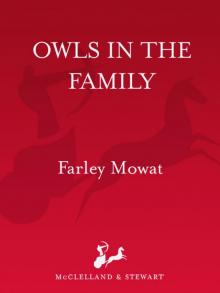 Owls in the Family
Owls in the Family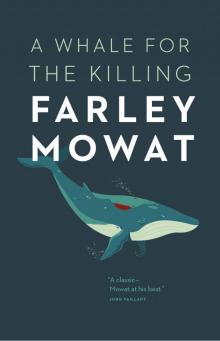 A Whale for the Killing
A Whale for the Killing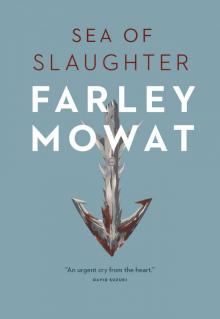 Sea of Slaughter
Sea of Slaughter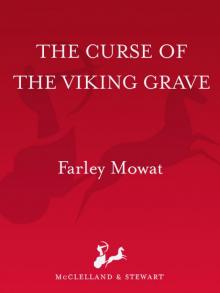 The Curse of the Viking Grave
The Curse of the Viking Grave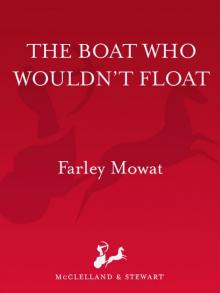 The Boat Who Wouldn't Float
The Boat Who Wouldn't Float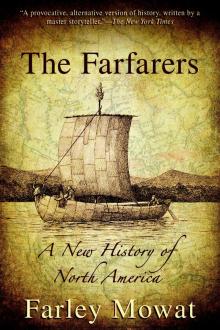 The Farfarers: Before the Norse
The Farfarers: Before the Norse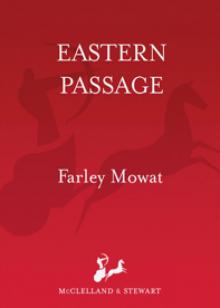 Memoir
Memoir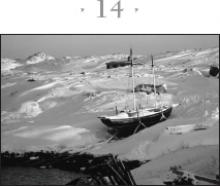 Bay of Spirits: A Love Story
Bay of Spirits: A Love Story The Black Joke
The Black Joke Sibir: My Discovery of Siberia
Sibir: My Discovery of Siberia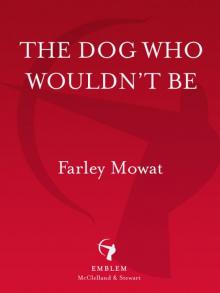 The Dog Who Wouldn't Be
The Dog Who Wouldn't Be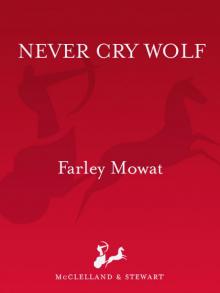 Never Cry Wolf
Never Cry Wolf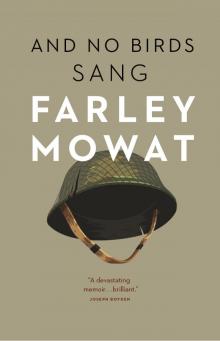 And No Birds Sang
And No Birds Sang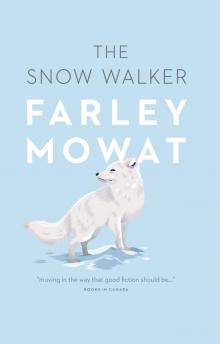 The Snow Walker
The Snow Walker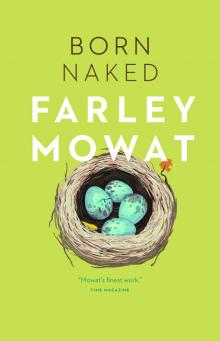 Born Naked: The Early Adventures of the Author of Never Cry Wolf
Born Naked: The Early Adventures of the Author of Never Cry Wolf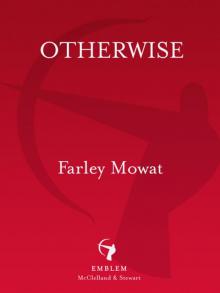 Otherwise
Otherwise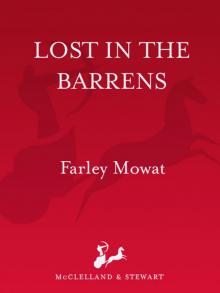 Lost in the Barrens
Lost in the Barrens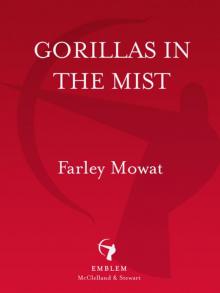 Gorillas in the Mist
Gorillas in the Mist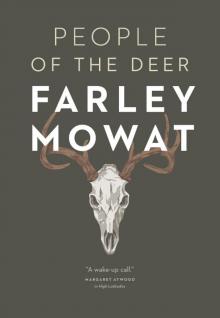 People of the Deer
People of the Deer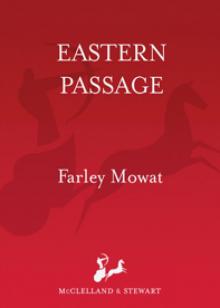 Eastern Passage
Eastern Passage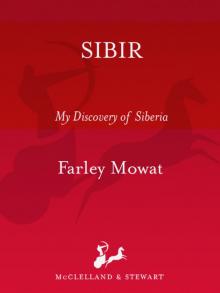 Sibir
Sibir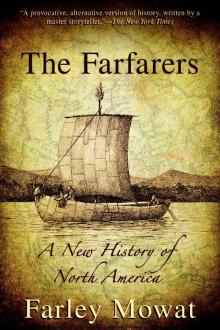 The Farfarers
The Farfarers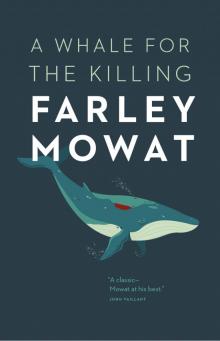 A Whale For The Killing (v5.0)
A Whale For The Killing (v5.0)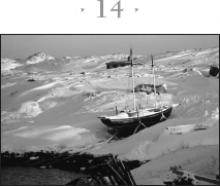 Bay of Spirits
Bay of Spirits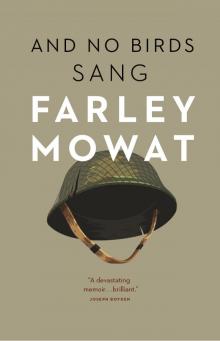 And No Birds Sang (v5.0)
And No Birds Sang (v5.0)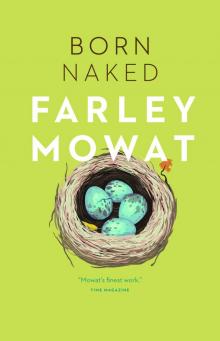 Born Naked
Born Naked